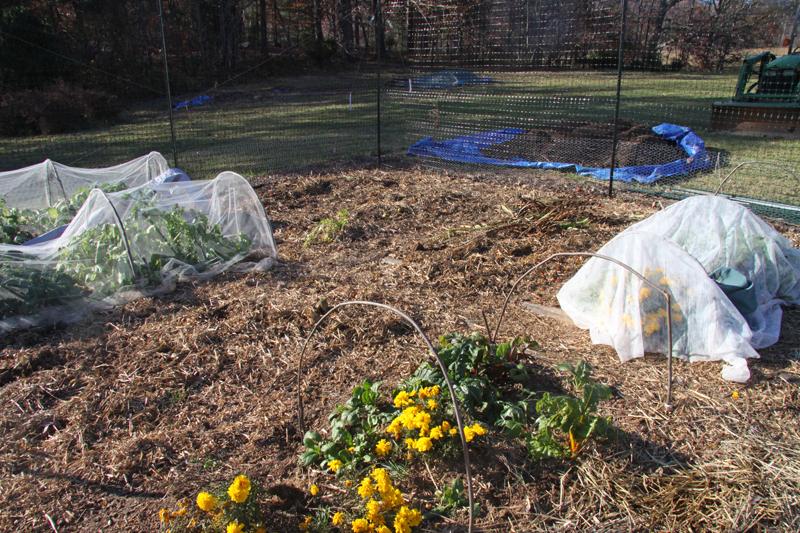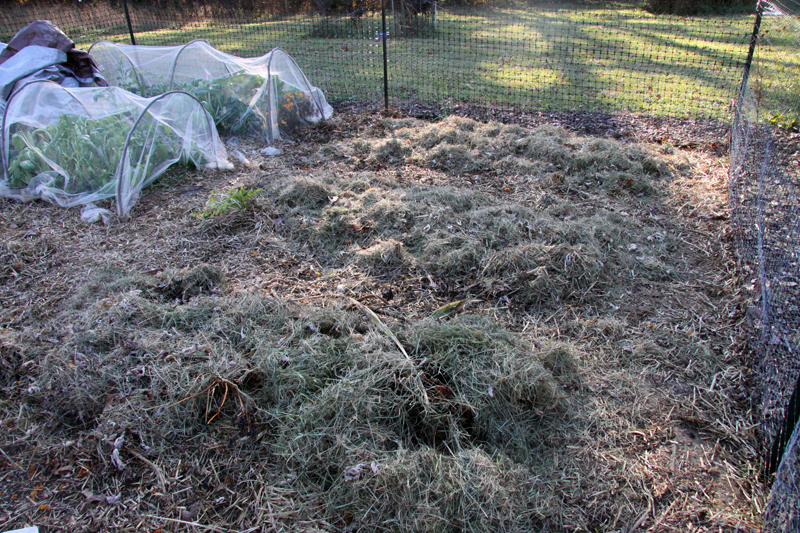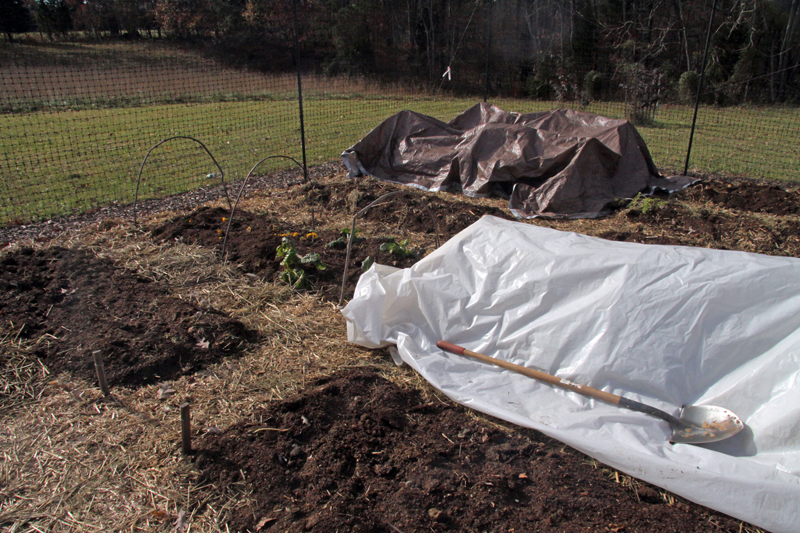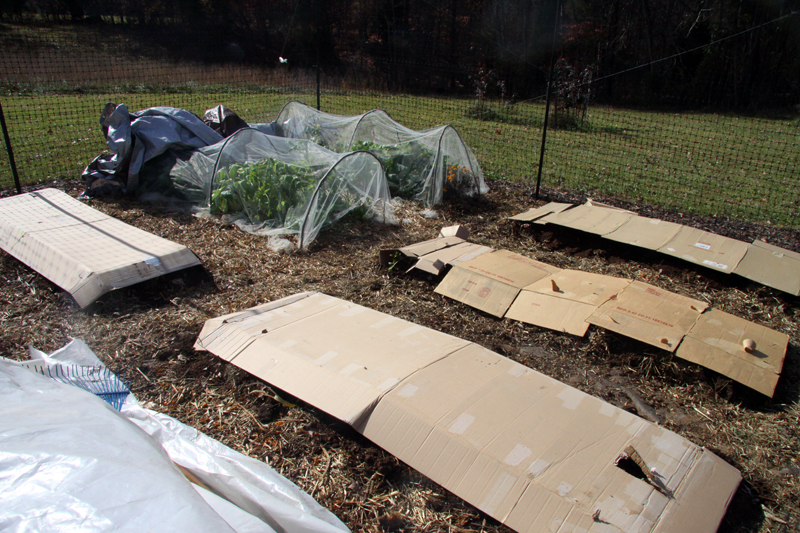Since late October I’ve been working on putting the garden to bed for winter. As I started to explain in this post, in year’s past I just ripped out the frost-blackened vegetation and made sure there was a thick layer of straw on the ground before abandoning the garden over winter. That worked well, but with this new garden I wanted to try harder. I also sensed that my soil fertility might be low. I know that soil is something that’s built over time, but I believe that some of the trouble I had with insects could be resolved by improving soil fertility, which leads to more resilient plants that are better able to defend themselves. Enter sheet mulching.
I’d read about sheet mulching in Gaia’s Garden, what some consider to be the Bible of permaculture, and which I found to be one of the best books I’ve read on gardening. I came to the conclusion that sheet mulching is basically creating the optimal home for worms to set up housekeeping, and as a big fan of the power of worms for improving soil, I was sold.
First I pulled out the really big, tough dead plants—the tomatoes and the toughest parts of the dead dahlias. I cut the rest of the lightweight vegetation to the ground and left it lying in the beds for a layer of nice, nitrogen-rich greens. I still had three beds producing winter greens and salad lettuce under row covers and plastic, so I left those standing.
Next came even more high-nitrogen material—first a nice scattering of blood meal, much to the delight of the dog who was helping me assemble my sheet mulch, and then I added a thin layer of grass clippings I raked out of the field.
Then I shoveled on a thick layer of well-rotten horse manure compost, delivered by my dad from his private stash.
Finally it was time for the fun part: adding the cardboard boxes. If one were sheet mulching over existing turf, the boxes would form a light-impenetrable barrier that would smother all existing vegetation. I was working with already-prepared beds so I wondered if this was necessary. But then I remembered how much the worms I kept in worm bins loved cardboard—and my herbalism teacher mentioned that worms are attracted to tasty sugars in the cardboard and work their way through all the layers of sheet much to get to the banquet—and by doing so create rich soil.
So down went the boxes, some of which I’d had for almost ten years and that had seen me through cross-country moves. In the small apartments I lived in before moving here I’d kept these boxes stashed under my bed, always ready for the next move that undoubtedly was just a couple of years away. There was something so sweet about finally retiring these boxes and using them to build the future of the food for this home.
Another important tip for sheet mulching—lots of water. Each layer needs to be soaked with water so that the worms are well-plumped and everything gets nice and rottey and just right for decomposition.
Stay tuned for the finished project later this week…





I will definitely be interested in seeing what you find in five months! We have raised beds and my husband has done the “layers” also but no cardboard. Very interesting!
[...] looks like now, after three years of concerted effort to build soil tilth and fertility through sheet mulching, composting in place, running chickens in the garden, and adding homemade compost at regular [...]